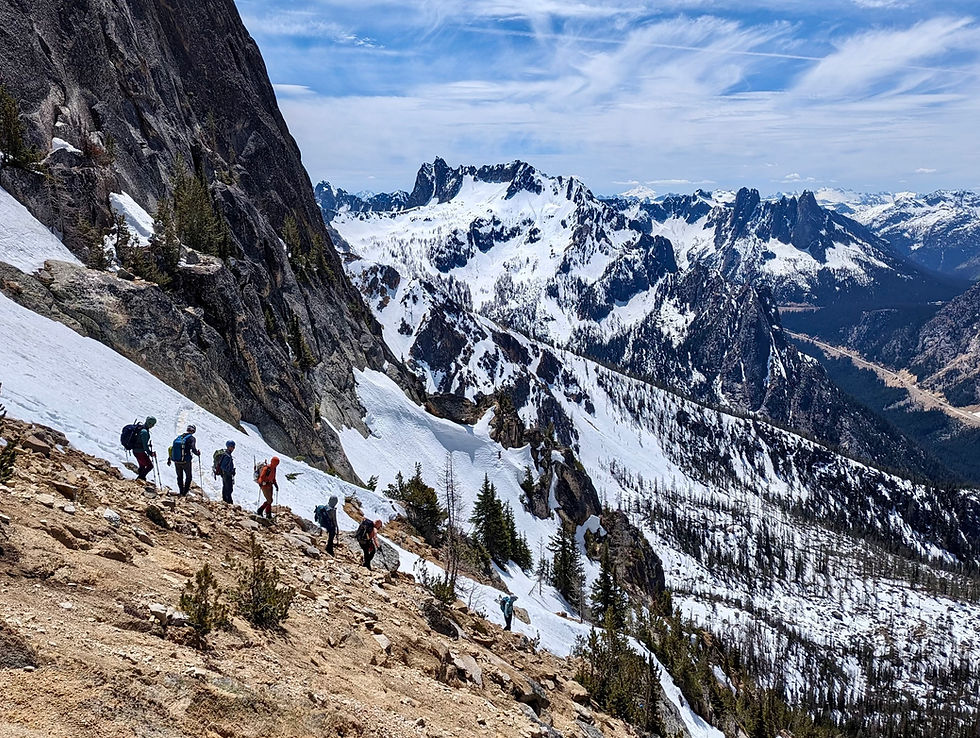Wooden Ski Wonders by Holly Weiler
- deannafinchamp
- Jul 3
- 3 min read
While skiing has been around for somewhere between 8,000 to 10,000 years, up until around 66 years ago all of those skis would have been made of wood. With the invention of the first successful plastic fiberglass ski in 1959, it was a very short transition to fiberglass skis taking over the market by the late 1960s. Today seeing someone out skiing on wooden Nordic skis is a bit of an oddity, generally with fewer than 10 competitors total even in our local Langlauf classic race despite a special category celebrating their place at the roots of skiing.
In early 2024 I participated in a fun group ski trip to the Methow Valley, planned months in advance and ultimately coinciding with a major cold snap. I arrived in Winthrop on a Friday night and happily purchased my three-day Nordic trail pass, and then woke up to a temperature reading of -15F not counting windchill on Saturday morning. I’m sure there’s supposed to be more science than luck when it comes to waxing modern skis, but I haven’t figured it out yet. After struggling through what was supposed to be an easy three-mile loop on my skate skis that felt most similar to what I imagine it would be like to ski over sandpaper, I gave up on my modern skis and pulled out my antique wooden Åsnes.
I have been lucky enough to pick up a handful of sets of wooden skis over the years, rescuing them from thrift stores and junk shops. Since I learned to ski during the time frame when woods had long since been supplanted by plastics, I spent a lot of time researching how to rehab an old pair of wooden skis, from burning in pine tar to best methods of waxing. And the main thing I have learned over the years is that cold snow is where wooden skis excel. Afterall, the recommended second step after applying fresh pine tar is to coat the skis in polar grip wax from tip to tail. For that super cold weekend on the Methow trails, I didn’t need to worry about any additional grip waxes beyond that.
The highlight of that trip was skiing a long loop route solo on my wooden skis. As I approached a trail intersection, a couple of skiers who were stopped and taking a break commented that with the way sound travels in cold conditions and my super squeaky 3-pin bindings, they could hear me from a mile away. But then one of them took a closer look at my skis and expressed disbelief and admiration that I was out on a pair of antique woods. I’m not exactly sure who he was, but he was wearing a US National Ski Team hat, so it was very fun to manage to slightly impress a far superior skier. But I also got the feeling he didn’t realize that in the conditions that day, nothing was easier than using wooden skis.
If you’re lucky enough to still have a pair of wooden skis tucked into a dark corner of the basement, consider taking them out to see the light of a winter day, especially if the polar vortex makes a return visit at some point this year. Or leave the modern skis at home for this year’s Langlauf race, dig through the closet for all the best woolen wear, and help get the wooden ski category up to double digits in number of competitors!






Comments